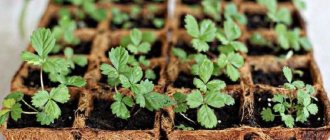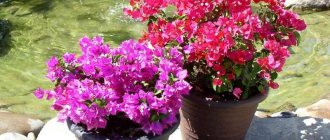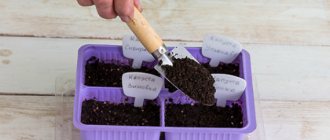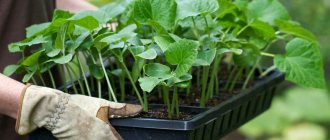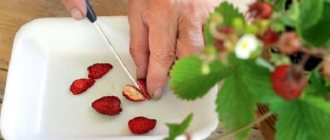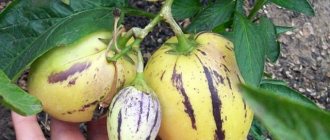Growing strawberries, also called garden strawberries, has become increasingly popular in recent years. And this is not surprising, because the fruits of this widespread crop are not only extremely tasty, but can also bring a certain profit. There are several ways to obtain strawberry seedlings, each of them has its own strengths and weaknesses. But planting strawberries with seeds for seedlings still deserves special attention.
Planting strawberries with seeds for seedlings
Stage No1. Determining the timing of sowing
If you visit your dacha only on weekends, then you can sow strawberries at the end of February or beginning of March. The fact is that in winter there is always time for thorough care of seedlings, and in this case you get the plants out of the garden before the drought (which is especially important if the summer in your region is hot). You can also use peat tablets for home cultivation, but more on that later.
Strawberry seedlings
If you live in a suburban area throughout the summer and are able to pay due attention to caring for your plantings, you can sow strawberries in March or June. Even later sowing is allowed if the summer is not hot. But the seedlings, most likely, will not have time to grow enough to be transplanted to a permanent place before the end of the season. This means that they will spend the next winter in pots or boxes.
Favorable days for planting strawberries according to the lunar calendar 2022
Many experienced gardeners and vegetable gardeners, when choosing dates, are guided by favorable days in the lunar calendar:
- January: 3, 11, 12, 16, 17 are the best dates. Can also be used on January 1 and 23-30;
- February: 12, 13, 14 and 19-27;
- March: plant seedlings 11, 12 and 13, as well as 19-26;
If we are talking about late sowing in a greenhouse or open soil, then the best days are:
- April: 8, 9, 15 (17-22);
- May: 5, 6, 7, 12, 13, 14, 15 (17-20);
- June: 1, 2, 3, 9, 10, 11, 12, 13, 30 (15, 16);
Favorable dates for the Waning Moon according to the zodiac signs are indicated in brackets.
Stage No2. Deciding on varieties
So, if you are planning to get healthy and strong seedlings, you should not use the first strawberry seeds you come across. There are several proven, so to speak, options, let’s consider each of them in more detail.
- Small-fruited remontant strawberries (both hybrids and varieties) are sold in almost every specialized store. It is relatively cheap, so you will have the opportunity to experiment with new products every year and choose only the best options for yourself.
- Large-fruited garden strawberries are also popular, but they are also quite expensive. But the seedlings from such seeds turn out strong and healthy.
- Seeds collected with your own hands . Obviously, they need to be collected not from F1 hybrids, but from varieties - only in this case the quality of the offspring will be in no way inferior to the parent plants.
The best strawberry varieties for growing seedlings
Method for collecting strawberry seeds for seedlings
Below is a more original way to collect strawberry seeds at home.
Video - An original way to collect strawberry seeds
Growing strawberries from seeds at home for beginners
Garden strawberries, in everyday life we are used to calling them strawberries or Victoria, are a herbaceous perennial plant that can grow in one place for up to 20 years. Of course, if you want to have a good harvest of berries, then the bushes need to be renewed every 3-5 years.
Of course, the process of growing seeds begins with their selection in the store. Nowadays there are a huge number of different varieties on sale for every taste and budget. Therefore, when purchasing, pay attention to the recommendations written on the packaging. But the main points must be taken into account immediately if you decide to propagate this culture in this way.
To grow seedlings you need fertile soil. You can buy it at a gardening store. The living earth, Terra Vita, is very suitable for this purpose. It contains all the necessary minerals and trace elements that seedlings need in the first days of growth.
If it is not possible to buy fertile land, you can prepare it yourself. To do this, mix garden soil with compost, ash, add vermiculite and coconut substrate, mix. The result will be loose, breathable soil. And this soil, previously disinfected, is sown.
Another point that must be taken into account. Strawberry is a light-loving plant. Therefore, when sowing seedlings in January, remember that at this time there is a short daylight hours and then you will have to add additional light to the seedlings.
Stage No3. Preparing the soil for seedlings
Ready-made soil for seedlings can be purchased in a store without any problems, but experienced gardeners still prefer to prepare the soil mixture with their own hands. Let's look at two popular ways to do this.
Soil for seedlings is an important element of success
Method one . Take sand, peat and turf soil in a ratio of 1:1:2, add a little complex mineral fertilizer (alternatively, you can replace it with rotted manure and ash). But note that the soil contains a lot of weed seeds, various types of bacteria, and insect larvae/eggs. To get rid of all this, steam the soil for half an hour over a pan of boiling water. After this, leave it for another 3 days to restore microbiological properties.
Components of soil mixture for seedlings
Method two . Take vermicompost, peat and sand (necessarily coarse-grained) in a ratio of 1:3:1. Another possible option is peat with sand in a 4:1 ratio.
Soil prices
soil for plants
Stage No4. Preparing seed material
Thanks to seed germination, you will be able to further control the germination process. To do this, soak the seeds in rain or melt water for about 2-3 days and change it twice daily. Because of this, germination inhibitors in the seed, which slow down the growth of the embryo, will be destroyed. After this period, spread the swollen seeds on damp toilet or filter paper, previously laid on a saucer, in a thin layer. Then place the whole thing in a plastic bag and move it to a warm, lighted area (but away from direct sunlight, otherwise it will require frequent watering).
Strawberry seeds
Note! Take the hatched seeds one at a time using a toothpick or a sharpened match and plant them in a container with loose sifted soil.
Seed germination procedure
There is another preparatory procedure - stratification . It helps to obtain stronger, more friendly and healthy seedlings. To carry out stratification, take a container with wet sown seeds, place it in the refrigerator and keep it there for 21-28 days, then put it in a warm place for subsequent germination.
Stratification
Aftercare
- Depending on the weather, water the bushes every 2-3 days.
- After watering, the soil around the plant is slightly loosened. Care must be taken to ensure that it does not settle or become compacted.
- Remove weeds regularly.
- If necessary, treat with insecticides to control pests.
- Fertilizers are applied after the first harvest of berries has been harvested. Typically, gardeners use the following fertilizer of natural origin: chicken manure - 2 spoons, water - 10 liters.
At the end of September, in anticipation of imminent frosts, strawberries are covered with humus, a layer no thicker than 1 cm. In addition, the bushes are insulated with dry leaves and grass or sawdust. If it often rains with strong winds in the fall in the region, then it is advisable to cover the plant with film. It is necessary to make holes in it for air to enter.
Stage No5. Sow strawberry seeds for seedlings
When the seeds, soil mixture and seedling boxes are properly prepared, you can proceed directly to sowing. This can also be done in two ways; let’s get acquainted with the features of each of them.
First sowing method
Step one . First, take a seedling box, fill it with soil, level it and compact it. Using a board, cut furrows.
Furrows in the soil
Step two . Place the seeds in these furrows (you can use a moistened match or tweezers for this) in approximately 2 cm increments.
Sowing strawberry seeds
Step three . If you sow several varieties of strawberries at once, you can also put up beacons with names so you don’t forget what is where.
It is advisable to label different varieties
Step four . Water the soil. It is advisable to do this with a spray bottle, otherwise you may wash out the crops. Also, do not forget that strawberry seeds are difficult to germinate, and therefore moisture should be plentiful.
For watering it is better to use a spray bottle
Step five . Cover the box with the crops with glass or film - this way you minimize the evaporation of moisture. Do not forget to ventilate the plantings and water them daily.
The box is covered with film
Second way. Sowing in the snow
Another possible option is to sow strawberry seeds in the snow. This will reduce the risk of deepening and will also help to achieve uniform germination. Pour the soil prepared as described above into the box, and pour a 1 cm thick layer of snow on top. Place the seeds on top of the snow, then wait until it completely melts. The seeds, along with melt water, will be drawn into the soil, so there is no need to bury or sprinkle anything.
Sowing strawberry seeds in the snow
Note! Strawberry seeds germinate just as well in complete darkness as in the light.
After this, cover the container with film or glass and place it on a lighted windowsill. Ventilate and (if required) moisten with a spray bottle every day.
Frequently asked questions and answers
How to collect strawberry seeds?
Remove the stems from ripe strawberries, place the berries in a mixer bowl, add a glass of water, cover the bowl with a lid and chop the berries - one minute is enough for this. Don't be afraid that the mixer blades will damage the seeds, this won't happen. Press the resulting mass through a fine sieve, then rinse what remains in the sieve with plenty of water to remove the pulp. Then transfer the mass to a jar of water and carefully drain the water: the soft tissue will go away, and at the bottom of the jar there will be clean seeds that need to be spread on a paper napkin and dried until flowable. Pack dry seeds, label them and store them until sowing.
What is the difference between strawberries and strawberries?
A varietal garden berry is a strawberry, and a forest plant with small, round, rather than elongated fruits is a strawberry. Strawberries have tall flower stalks and leaves with more convex and lighter veins. Strawberries do not turn completely red. Garden strawberries are a monoecious plant, and strawberries have two types of flowers: male, sterile, and female, fruitful. In the forest you can find both wild strawberries and strawberries, but only garden strawberries are grown in cultivation.
Strawberry/Strawberry
Unfortunately, in everyday life these two names are often confused, so on Internet sites they usually write about strawberries, meaning garden strawberries.
Why don't strawberries sprout?
There may be several reasons why seeds do not germinate:
- Non-sterile soil;
- Poor pre-sowing seed treatment;
- Poor stratification;
- Storing seeds in a dry cloth;
- Damage to sprouts of sprouted seeds.
That is, when preparing for sowing, you made one or more of the listed mistakes. Treatment of soil and seeds for sowing must be thorough. Make sure that the napkin in which the seeds are wrapped for swelling is always damp. Do not allow sprouts to appear on the seeds, because when sowing they can easily be broken off, and if this happens, the seed will never sprout.
Why do strawberry seedlings grow poorly?
The following factors can negatively affect the growth of strawberry seedlings:
- Inappropriate or contaminated substrate;
- Insufficient or excessive watering;
- Lack of nutrients in the substrate;
- Improperly organized or insufficient lighting;
- Sudden changes in temperature and fluctuations in air humidity in the room;
- Damage to the root system of seedlings during picking.
In order for seedlings to grow strong and healthy, you need to prepare carefully for sowing: study the recommendations of experts, purchase high-quality seeds, properly stratify and disinfect them and the substrate, and allow the seeds to swell. After sowing, you need to create the necessary conditions for the seedlings and then properly and promptly care for them.
Why do strawberry seedlings turn yellow?
This happens for the following reasons:
- Direct sunlight hits the leaves and leaves burns;
- Plants suffer from lack of moisture;
- Seedlings were affected by disease or attacked by pests;
- In an incorrectly composed substrate, seedlings lack nitrogen or microelements - iron, magnesium, boron.
Analyze your actions, determine the cause of yellowing leaves and eliminate it.
Mold has formed on the surface of the crops - why?
When the substrate is sterilized, all the microflora in it dies, but nature does not tolerate emptiness, so ubiquitous fungi begin to develop in the soil, forming mold on the surface of the soil in greenhouse conditions. To prevent this from happening, regularly ventilate the crops and monitor the formation of condensation under the coating. Loosen the soil very carefully so that the mold does not form a continuous film that prevents the soil from breathing. Sprinkle the surface with a thin layer of dry sand or wood ash.
You can spray the surface of the soil with copper sulfate, but when preparing the solution, try not to overdo it with the dosage.
Is it possible to grow remontant strawberries from seeds?
Of course you can. Prepare the seeds, soil and sow in the same way as regular varietal strawberries are sown - distribute the seeds over the surface without sprinkling with anything. Cover the container with transparent material, place the crops in a warm place and do not remove the covering until the first shoots appear. After this, regularly ventilate and water the young plants, and in the phase of formation of one or two pairs of true leaves, plant the seedlings in separate containers.
The conditions for keeping and caring for seedlings of remontant and regular strawberries are practically no different. As soon as the earth warms up and the seedlings undergo hardening procedures, they can be transplanted into the garden bed. It is better to pinch off the first flowers of remontant strawberries in order to subsequently get a good harvest of large berries.
Is it possible to grow seedlings from frozen strawberry seeds?
Why not try? Nothing terrible happens to the seeds in the freezer; on the contrary: at low temperatures they will undergo stratification, and all you have to do is collect the seeds from the berries, disinfect them and keep them in a damp cloth to swell. Then sow the seeds from the freezer in the usual way into sterile soil, place the crops in the necessary conditions and wait for germination. Even if for some reason the seeds do not germinate, you will receive, although negative, invaluable experience.
What varieties of strawberries can be grown from seeds?
From large-fruited strawberry varieties, you can grow Moscow Delicacy, Xima, Alyonushka, Lord, Festivalnaya, Fireworks, Holiday, Honey, Vima, Kokinskaya early by seed, and from remontant varieties - Crimean Early, Queen Elizabeth II, Garland, Seasons, Ali Baba, Yellow miracle.
You can grow seedlings from seeds collected from your own varietal strawberries, but hybrid varieties are not propagated by seeds. When propagated by seed, hybrids produce plants whose fruits have characteristics of only one of the plants used to breed the cultivar, and often these are not the best qualities.
Stage No6. We look after the seedlings and carry out diving
Developing seedlings require quite a lot of light. If the boxes with seedlings are indoors, then remember: the higher the temperature, the more light you need. Water the seedlings moderately but regularly - the top layer of soil should never dry out. When the plants have 2 true leaves, you can pick.
Strawberry seedlings ready for picking
Table. Instructions for picking strawberry seedlings.
| Steps, photo | Description of actions |
Step one | Dig up each of the seedlings one by one, and then pinch off the long root. |
Step two | Plant the seedlings in a large box (the distance between them in this case should be 8 cm) or individual pots 9x9 cm. |
Step three | Water the picked plants. Try to do this carefully, with a weak stream. |
Video - How to grow strawberries from seeds
Choosing the right container
When it comes to choosing a container for growing seedlings, everything that is at hand is used. However, the gardener should take into account that seedlings develop quickly, and too small a container will not allow the roots to develop.
Each container should be treated against diseases and viruses. To do this, the container is washed and treated with manganese. It is advisable not to use wood; it often becomes a breeding ground for bacteria and fungus.
To achieve a positive result, it is better to use special silicone containers; they are easy to clean, lightweight, durable, and maintain temperature conditions. It is necessary to make holes in advance that will help excess moisture escape. The standard side is 10 cm, the length and shape are selected by the gardener independently.
Sowing in separate containers
The best option if seedlings are grown for sale. Then the gardener will not have to once again disturb the young plant by separating it from the rest. Moreover, this option is more convenient for transplanting into open ground. The likelihood of damaging the root is minimal.
You can use special single-phase pots or special containers with separate cells. The number of seeds for germination should not exceed the number of containers.
Sowing in boxes
This option is more suitable for home germination of seedlings. If the gardener is not sure about the quality of the seeds, the box provides more opportunities to grow strong seedlings. It is worth considering that even with ideal care, not all seeds survive.
Boxes are easier to artificially illuminate, they do not take up much space and are easy to transport. Today you can purchase ready-made containers with a measuring line for convenience.
Stage No6. Planting seedlings in the ground
45-60 days after the first shoots appear, you can begin planting seedlings in a permanent place. But before that, do hardening - take the pots out into the fresh air in the shade and gradually accustom the plants to sunlight. If you plant winter seedlings in the spring, you can get a harvest in the first year. But summer seedlings that grew in the open air should be planted in the ground before the end of August. If for one reason or another you sowed late, and the strawberry seedlings at the end of summer are still very small, it’s okay! Take containers with seedlings, dig them into empty beds, insulate them with spruce branches and oak leaves (this is in case the winter is snowless) and leave them until the beginning of spring.
Planting strawberries
An alternative option is peat tablets.
Strawberry seeds can be sown as seedlings and in peat tablets. The good thing about this method is that diving, a procedure so traumatic for young plants, is not required here.
Growing strawberries from seeds in peat tablets
Prepare seeds in the same way as for normal sowing. When they hatch, you can get down to business.
First you need to prepare the strawberry seeds
Place the tablets in a plastic container and fill with water. Wait until they swell to “columns”. Add water regularly. When the tablets no longer absorb it, drain the excess from the container. Place the hatched seeds in special recesses located at the top of the tablets. You can use a toothpick. You can sprinkle the planted seeds, although this is not necessary.
Sowing seeds in peat tablets
Cover the container with a transparent lid and move it to a well-lit place with a temperature of no more than +20 degrees. Remove condensation from the lid every day and ventilate the container to prevent mold from forming. If the latter does begin to appear, carefully remove it with a toothpick and drip a fungicide solution (for example, Maxim) onto these places.
The container is covered with a lid
When the first true leaves appear, remove the lid. Cover the exposed roots (if any). If the “columns” have decreased, you can add water to the container (still until completely absorbed), do not forget to drain the excess.
Note! As for fertilizing, add humates or seedling mineral fertilizers when watering every 14 days.
Strawberry seedlings in peat tablets
When the seedlings are well developed and their roots are visible on the surface of the tablets (as a rule, this occurs after June 10), you can begin planting in the ground. The algorithm of actions is given below.
Step one . First, prepare the bed - add rotted manure or humus (1⁄2 buckets per 1 square meter). In the case of clay soil, increase the consumption of humus to 1 bucket, additionally add the same amount of peat and 1⁄2 bucket of sand. You can also apply complex mineral fertilizer (35-40 g per 1 square meter). After this, dig up and level the soil.
Fertilizer application
Step two . Stretch the cord between the pegs to ensure even rows. Mark each row with a small groove.
Marking a row with a shallow groove
Step three . Make holes of the required size in increments of 30 cm, plant peat tablets with plants in them.
The distance between holes should be 30 cm
Step four . Fill the remaining voids with loose soil - the growing point should be at surface level. Fill in very carefully, then lightly compact the soil.
Compacting the soil around the plant
Step five . Water the soil around the plants. Be careful not to blur it.
Watering seedlings
Note! It is desirable that the distance between the rows be 35-40 cm, and the distance to other crops should be at least 50-60 cm.
And in conclusion, another possible way to plant strawberry seedlings in the ground.
Table. Instructions for planting strawberry seedlings using covering material.
| Steps, photo | Description of actions |
| Step one | Prepare the bed and lay a piece of lutrasil cloth on it. Secure the corners of the material with metal staples. Mark the planting areas - insert pegs in the right places and stretch ropes between them. Cut holes in the material in increments of 30 cm (do it crosswise using a knife). Bend the corners into the ground. Cut holes in the remaining rows in the same way, but always in a checkerboard pattern. |
| Step two | Dig a hole inside each hole (approximately to the depth of the scoop), leave the soil - it will still be needed for dusting. |
| Step three | Place the plants in the holes; the growing point should still be located at ground level. Add the soil you left. |
Strawberries in a greenhouse
When growing strawberry seedlings, you should not expect quick germination. They will appear 20-21 days after landing. The fact is that all small-seeded plants take a long time to develop. This is due to the small size of the seed, which cannot contain many nutrients. More details in this article.
Video - How to plant strawberry seedlings in the fall
Methods for obtaining seeds and storing them
If you decide to try this option in practice, then all that remains is to choose the most convenient way to obtain seeds. As you know, strawberry seeds are very small. They can be removed from the surface of a well-ripened berry only with part of the pulp, which must subsequently be disposed of. This is most often done with a sharp object (scraping or cutting with a thin knife/blade), a sharpened stick (picking out with a toothpick, match, needle) or by wiping the pulp through gauze. The withdrawal process will be painstaking one way or another, but not too troublesome.
One false polynut (as the strawberry fruit is called in the botanical classification) can contain on average about 350 achenes
In the first two cases, the extracted nuts are laid out on a dry paper napkin to dry. After the pulp dries after a few days, they are easily separated. They are disinfected with any available biofungicide in accordance with the instructions on the original packaging, dried and poured into a parchment bag for storage, having previously written information about the crop: expected characteristics, collection time, etc.
You can crush (rub with your fingers) the cut layer in a gauze bag and, rinsing several times in clean water, gradually separate the grains. The further preparation procedure remains the same: the seeds are disinfected, dried and stored.
Another method involves using a blender, in which the berries are crushed with a large amount of water. Straining the mass through a fine-mesh sieve, repeat the procedure several times, sifting out the seeds.
Dried seed material is stored in a cool, dry, dark place until sowing. Germination persists for three to four years , gradually decreasing.

